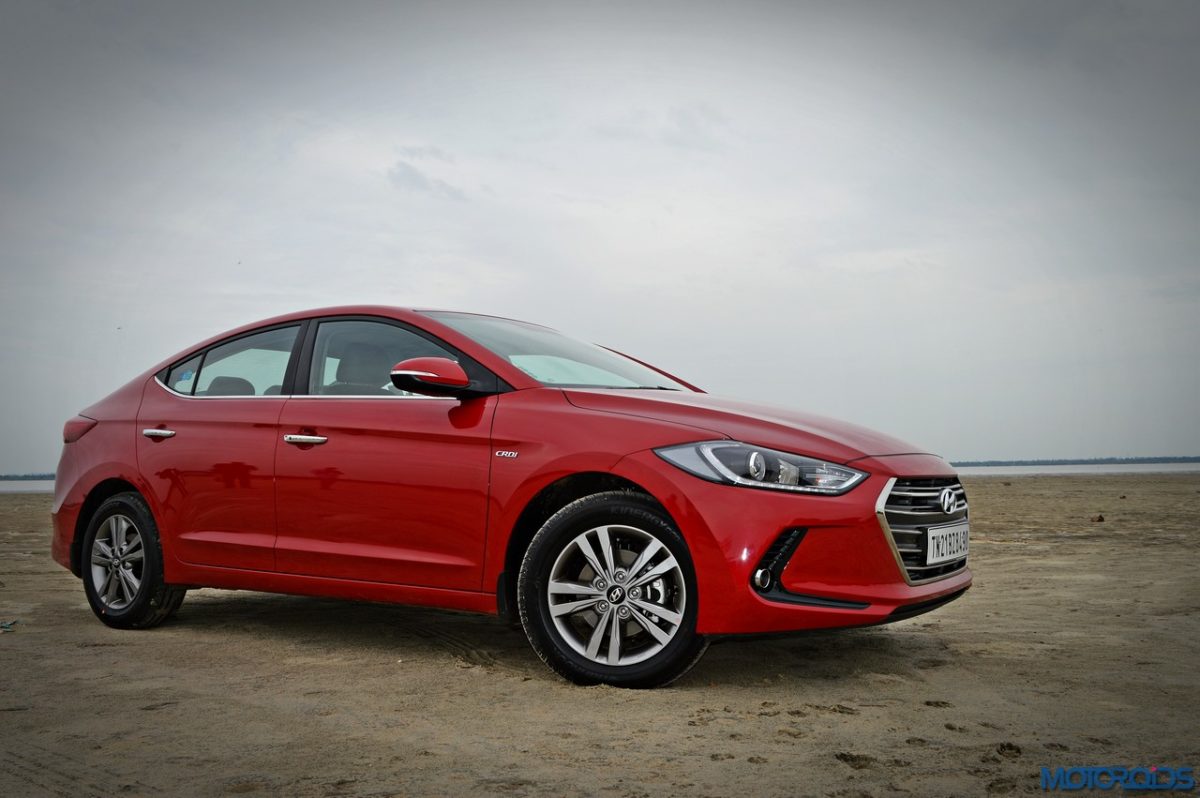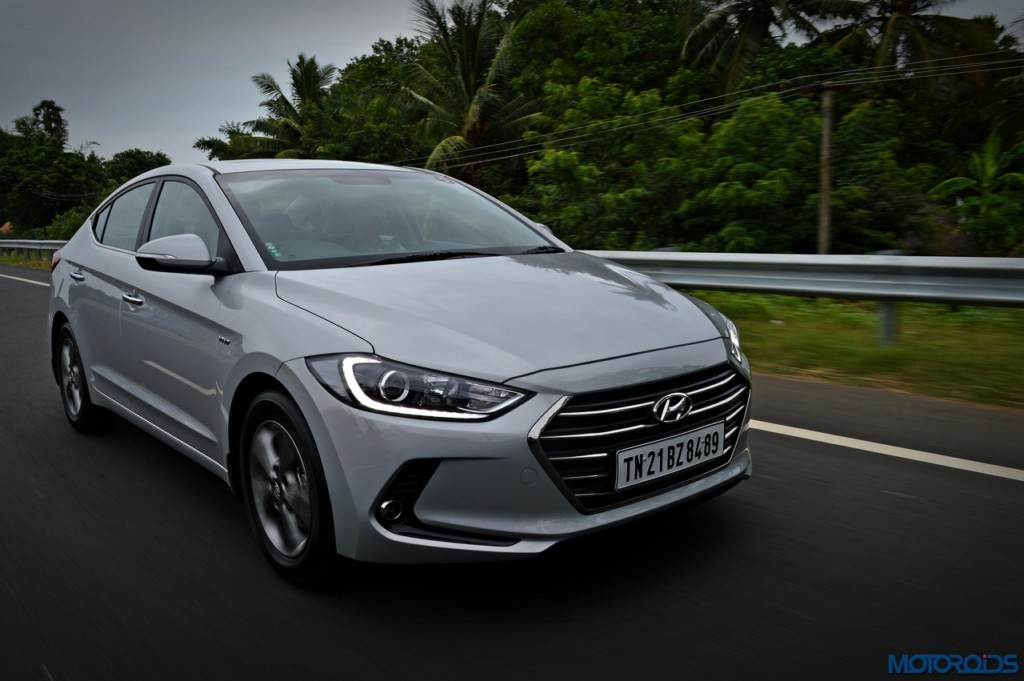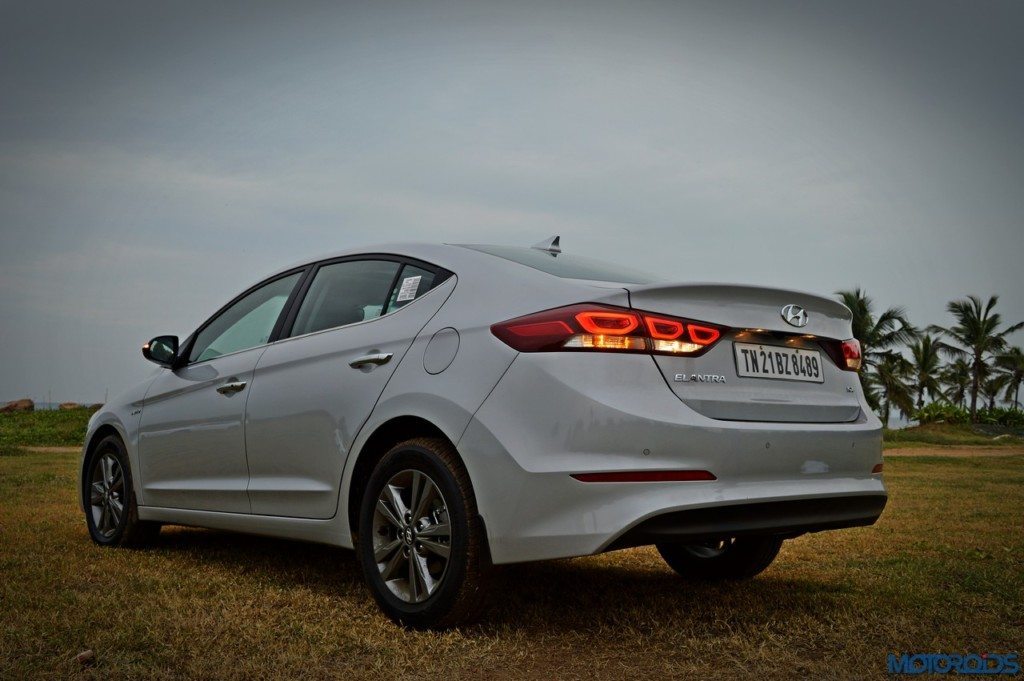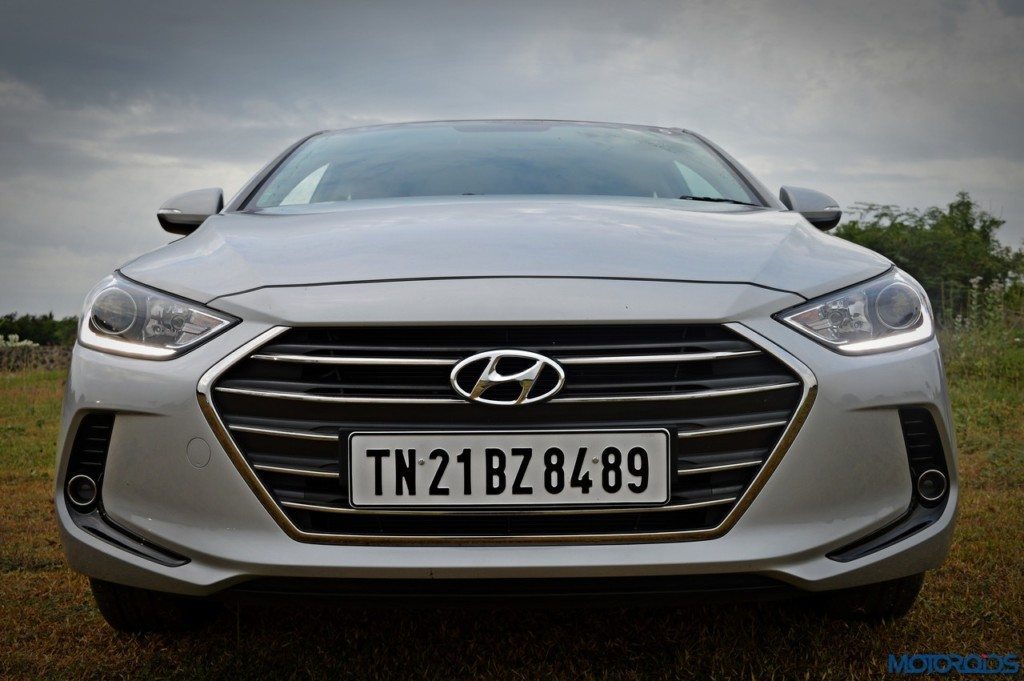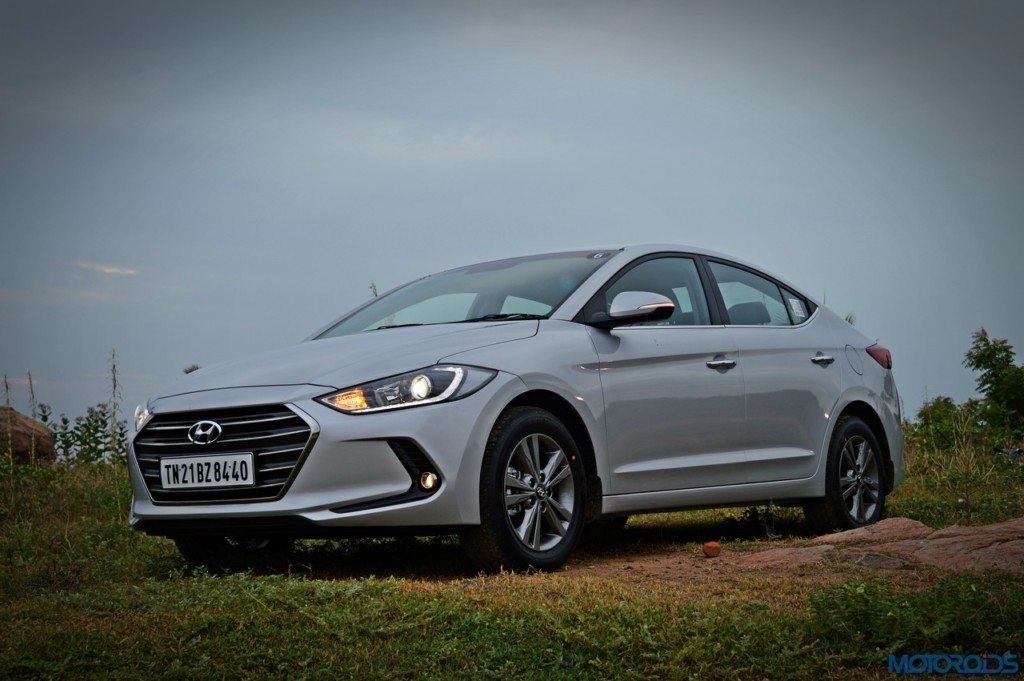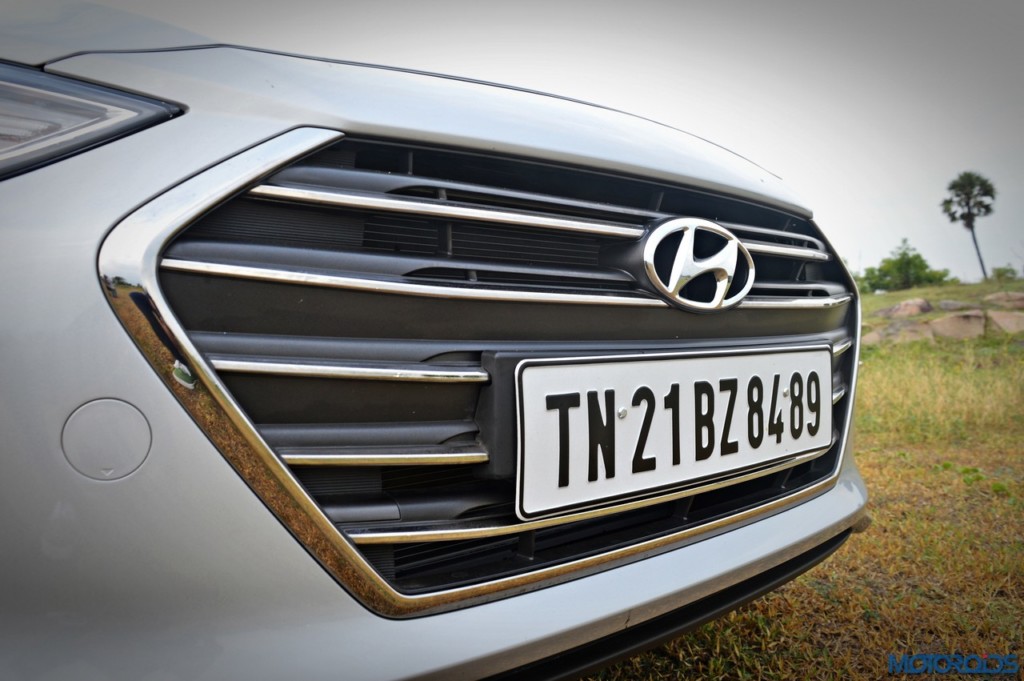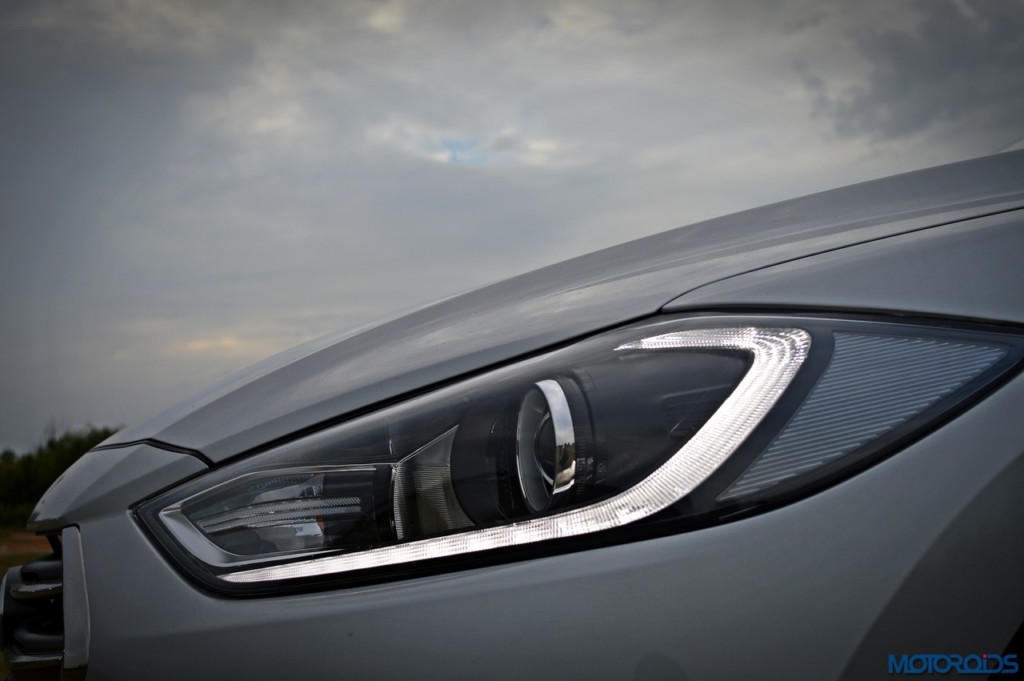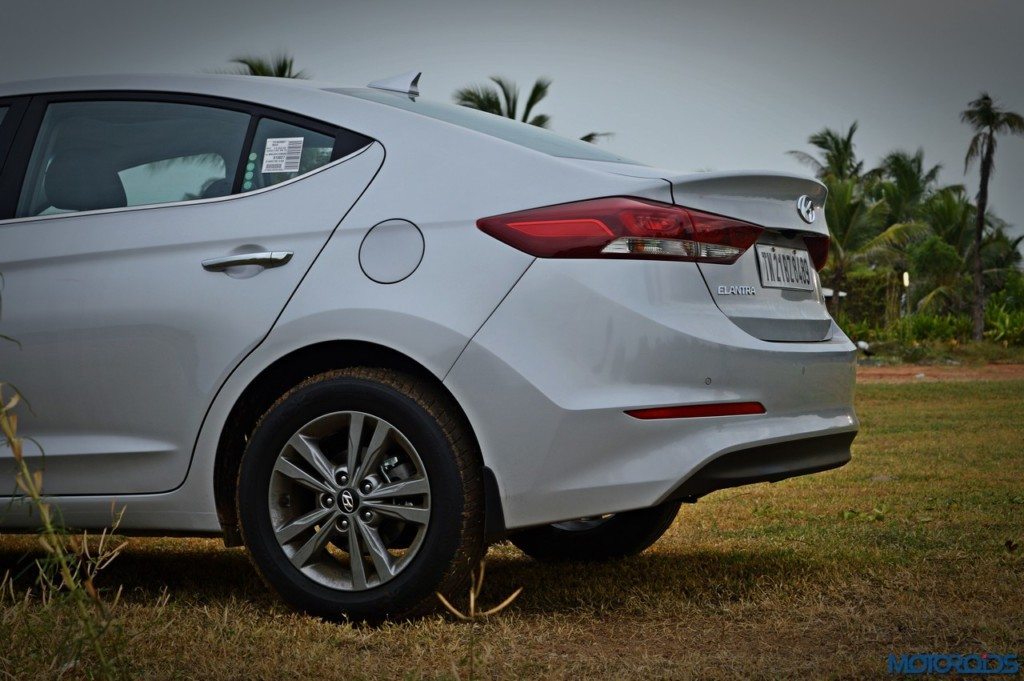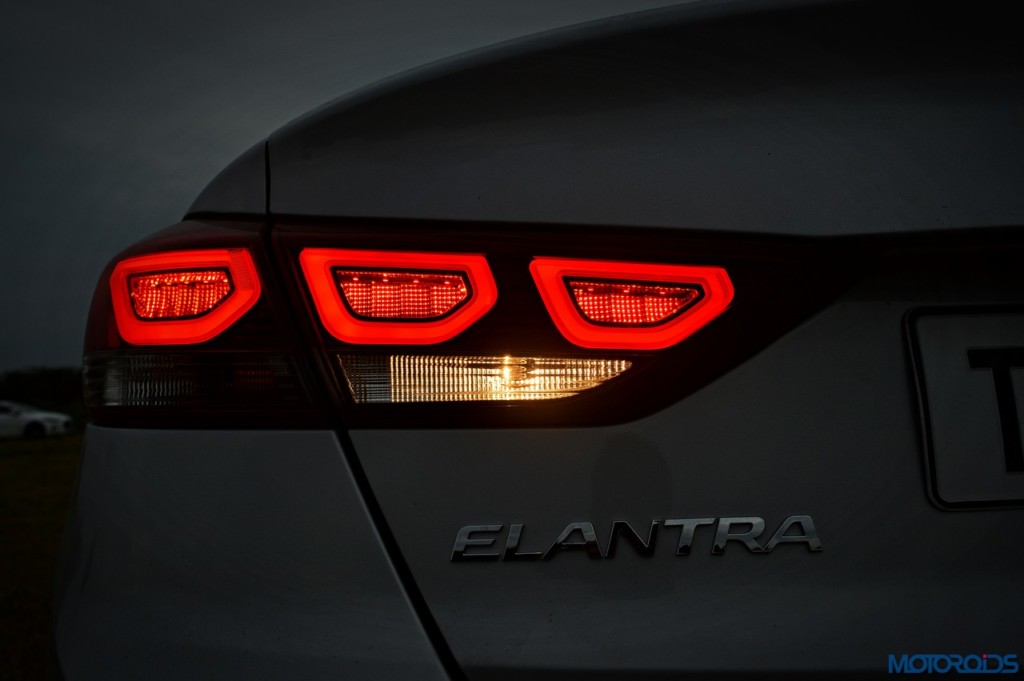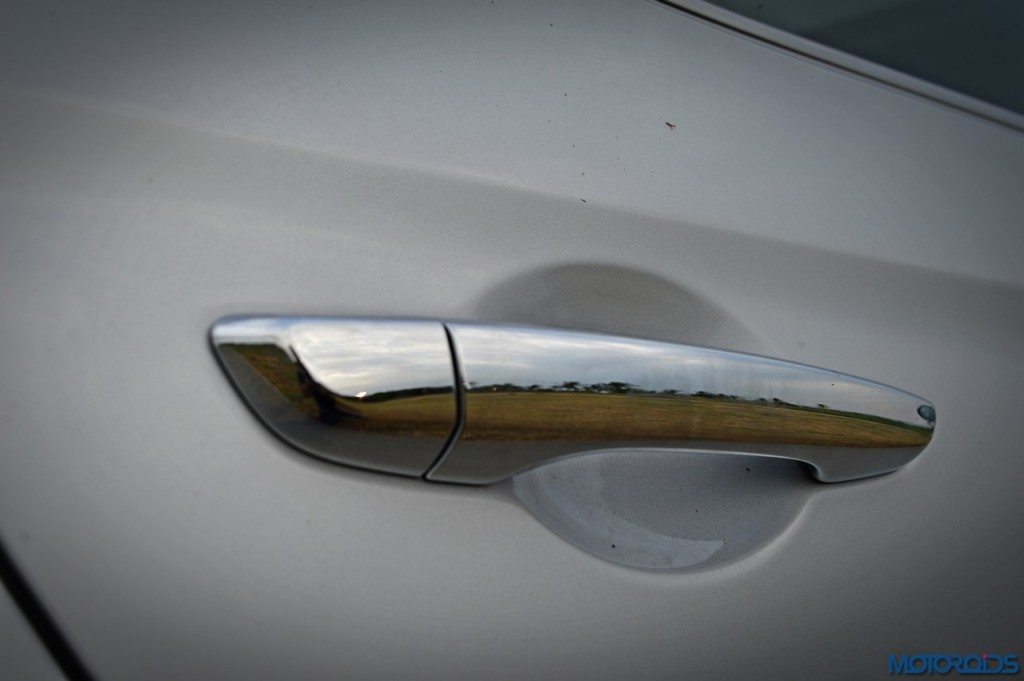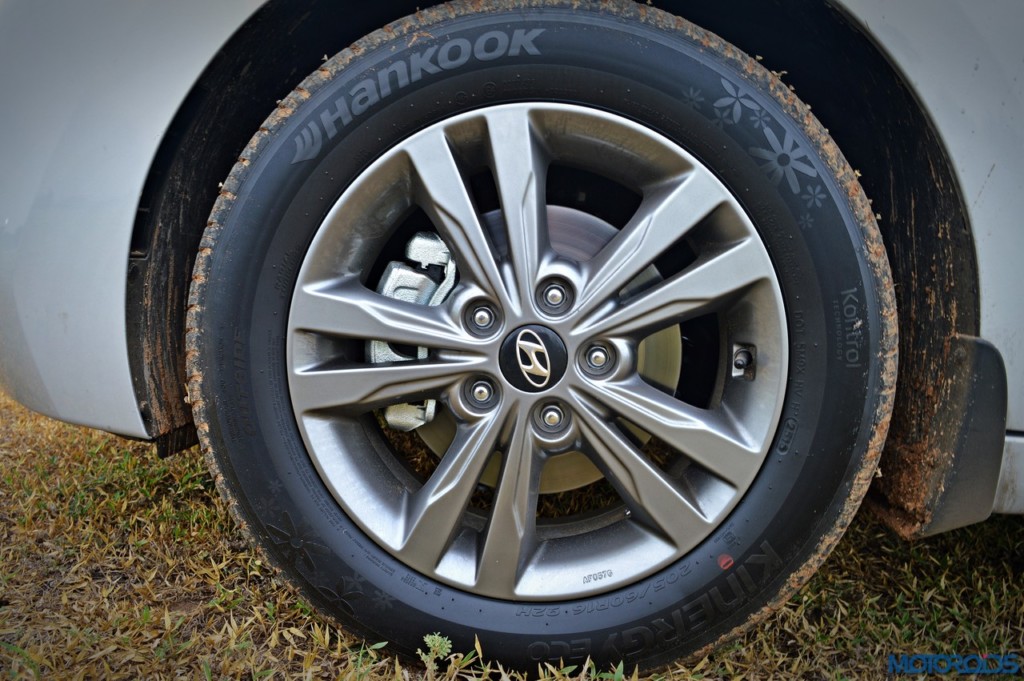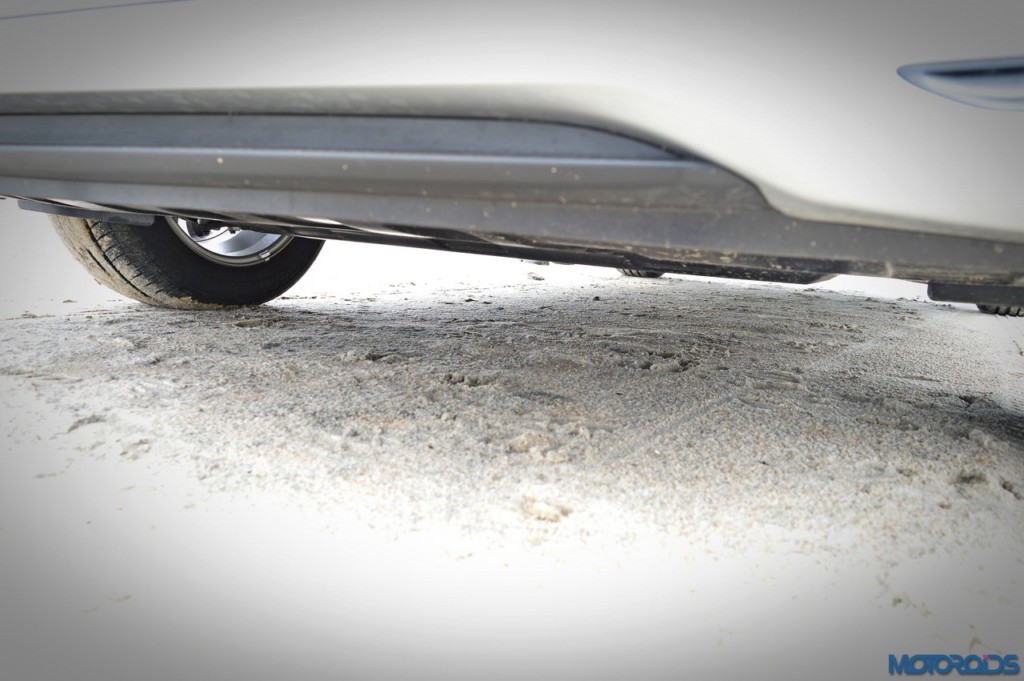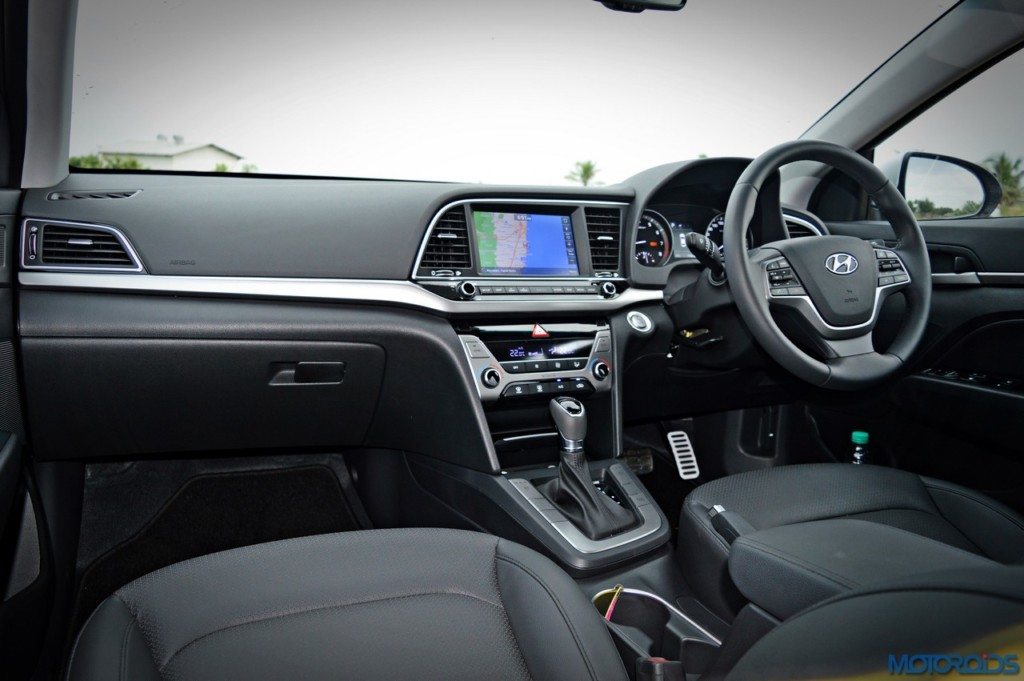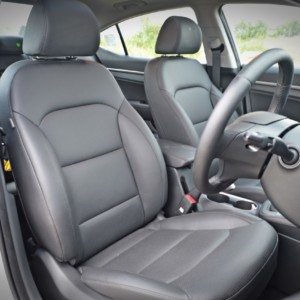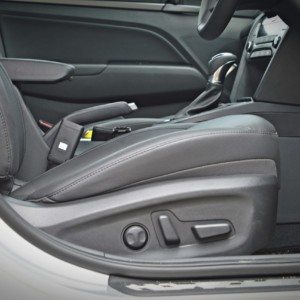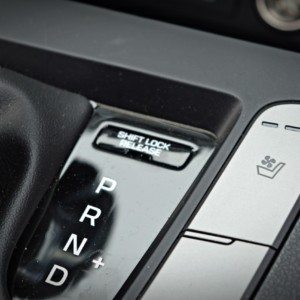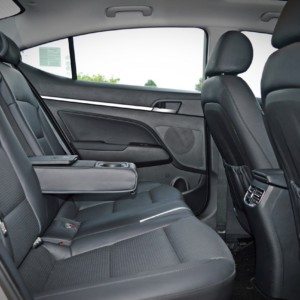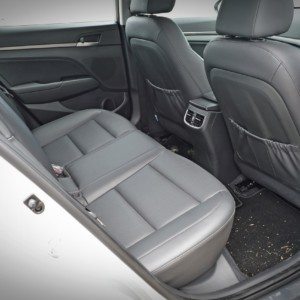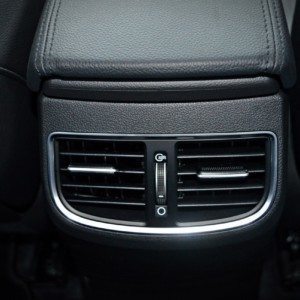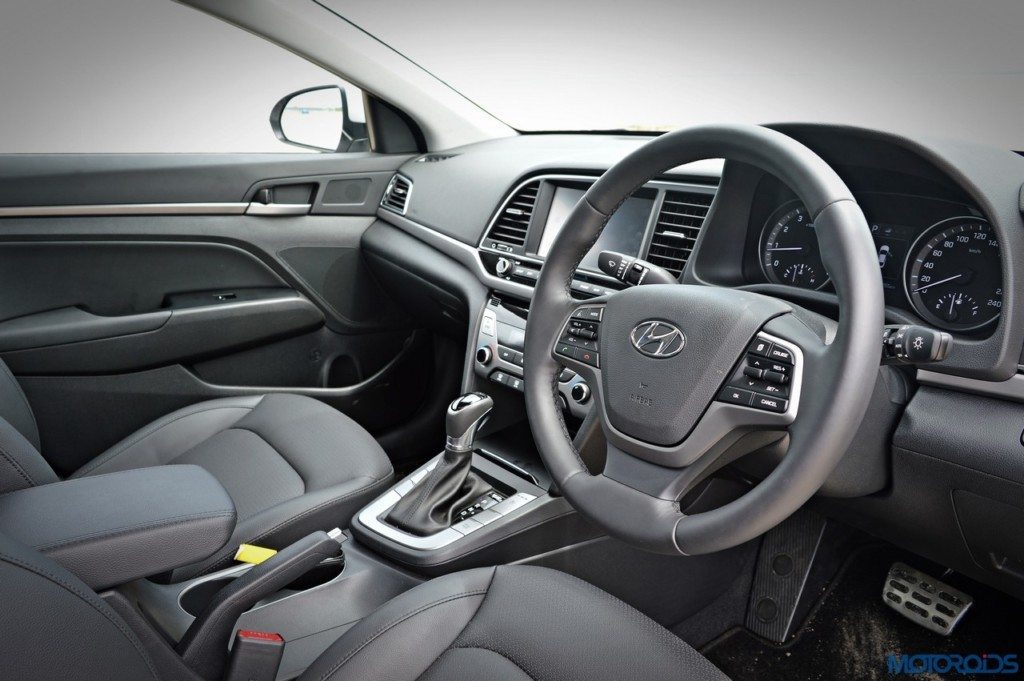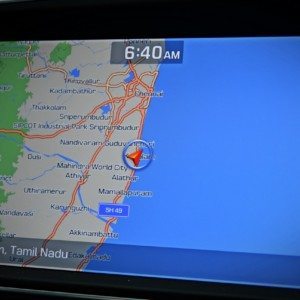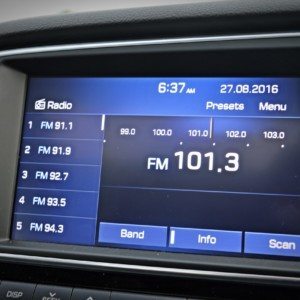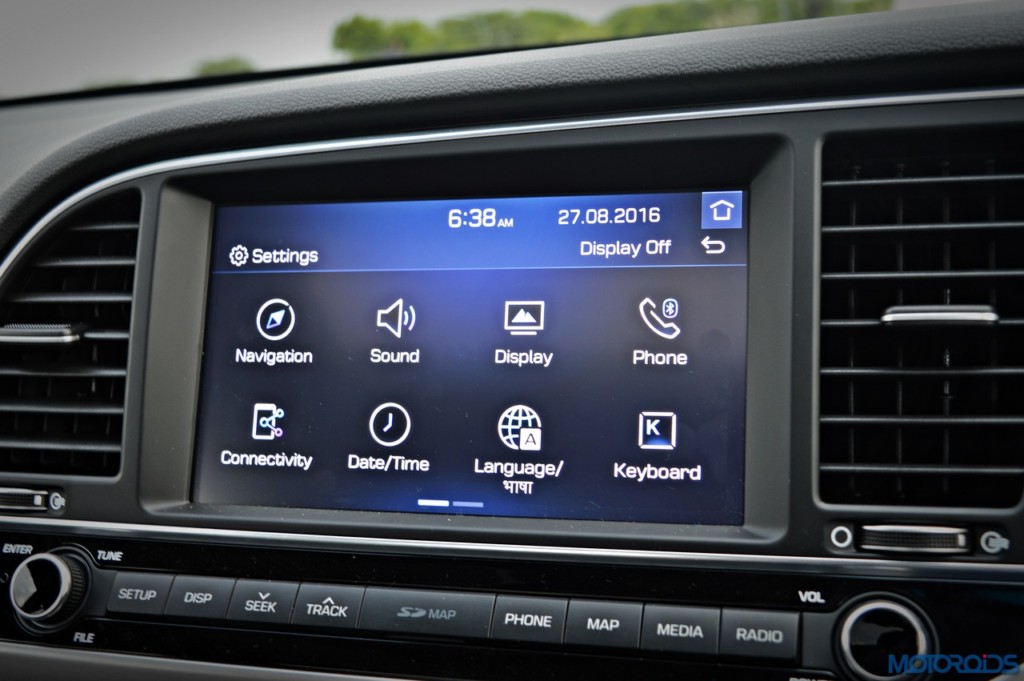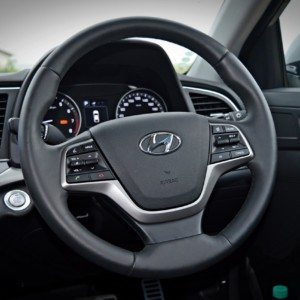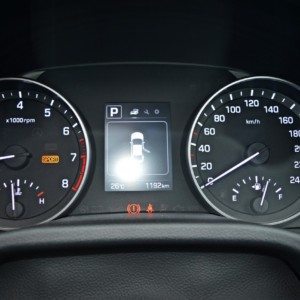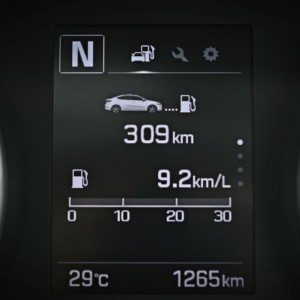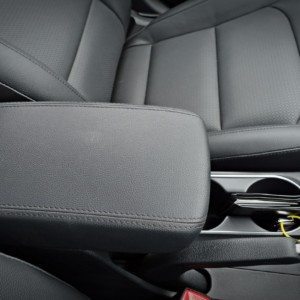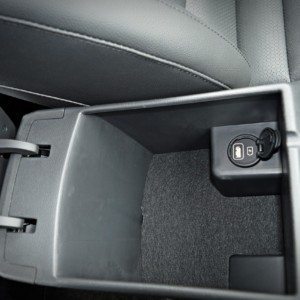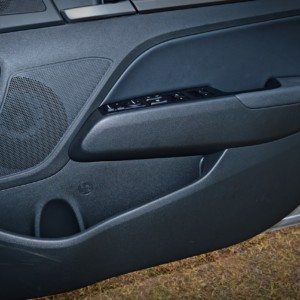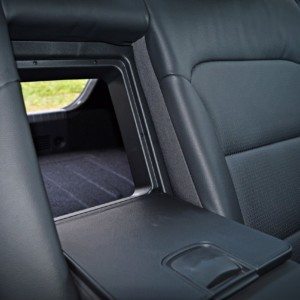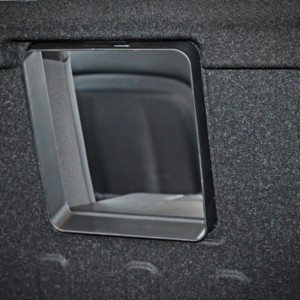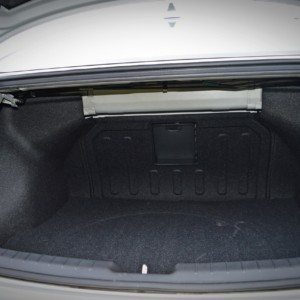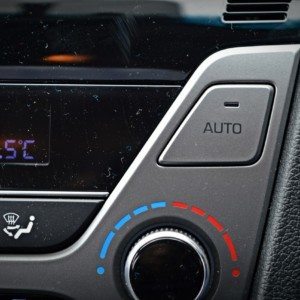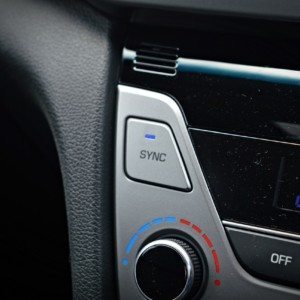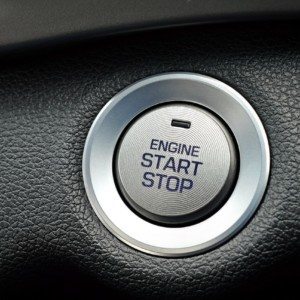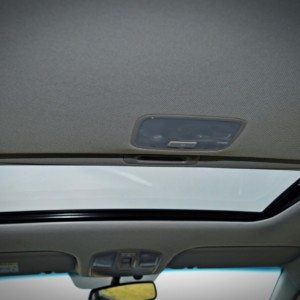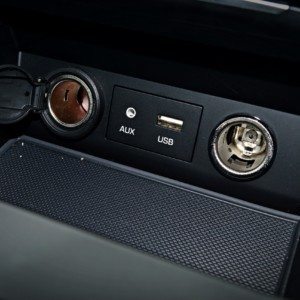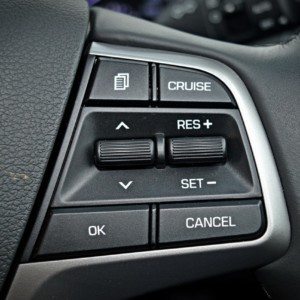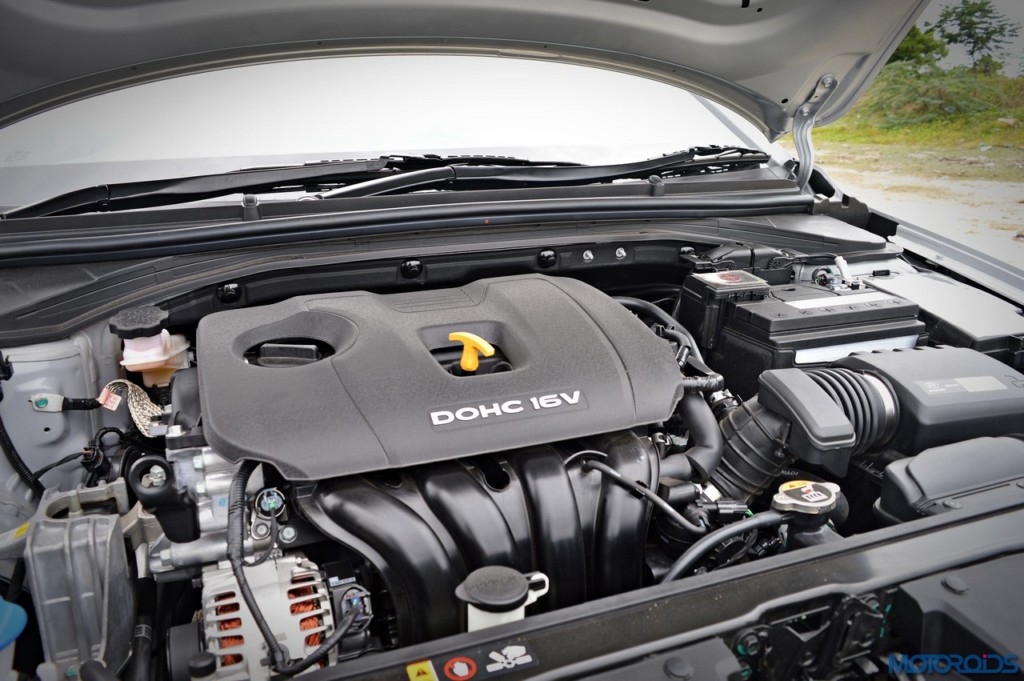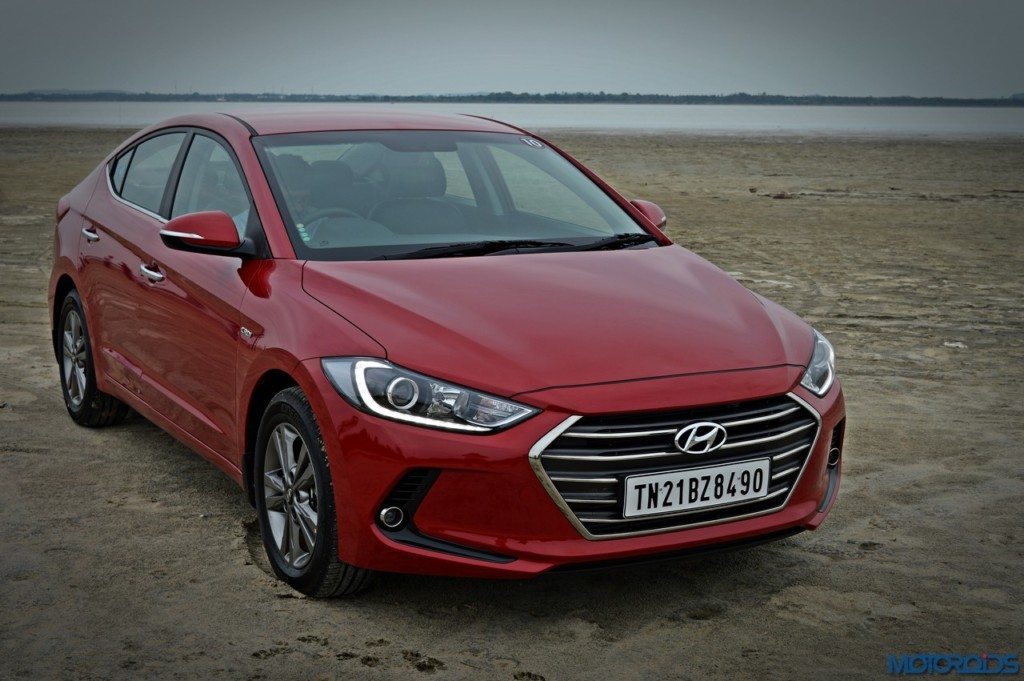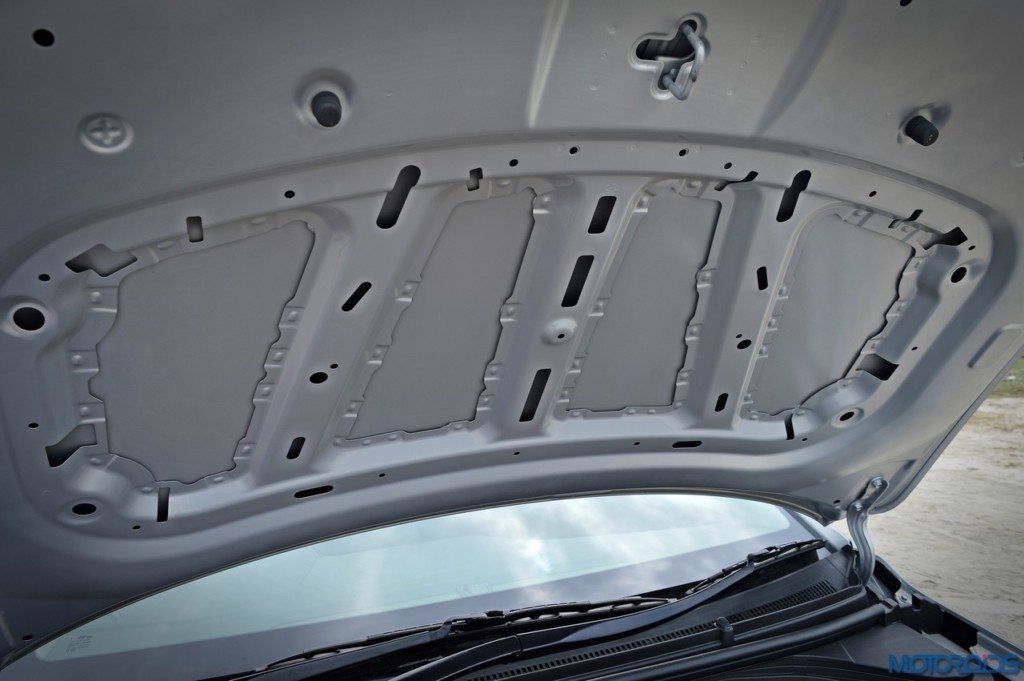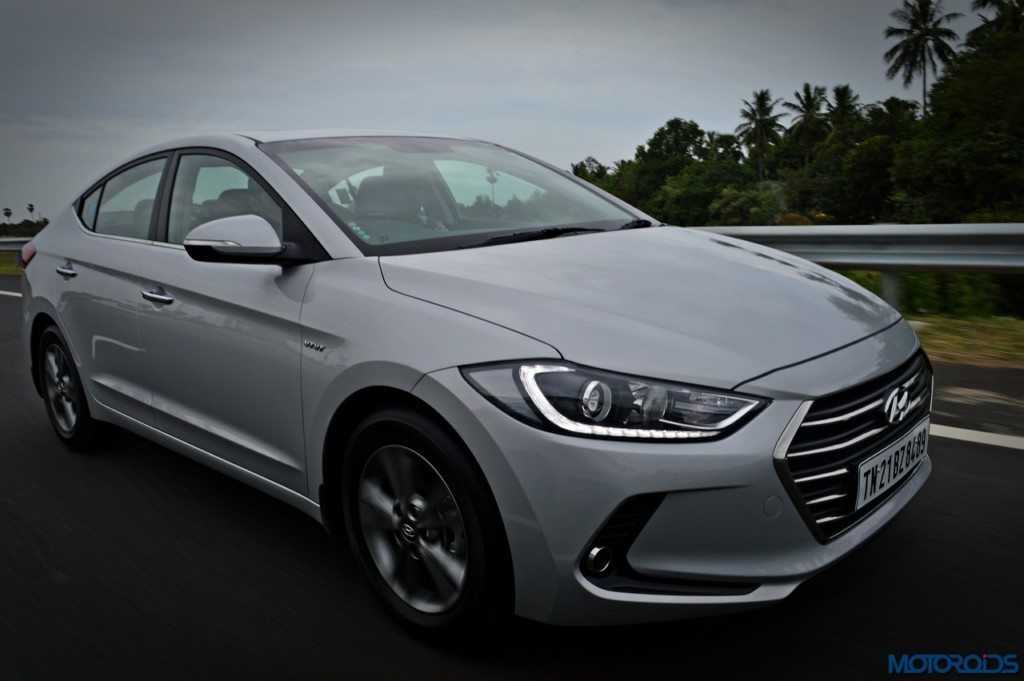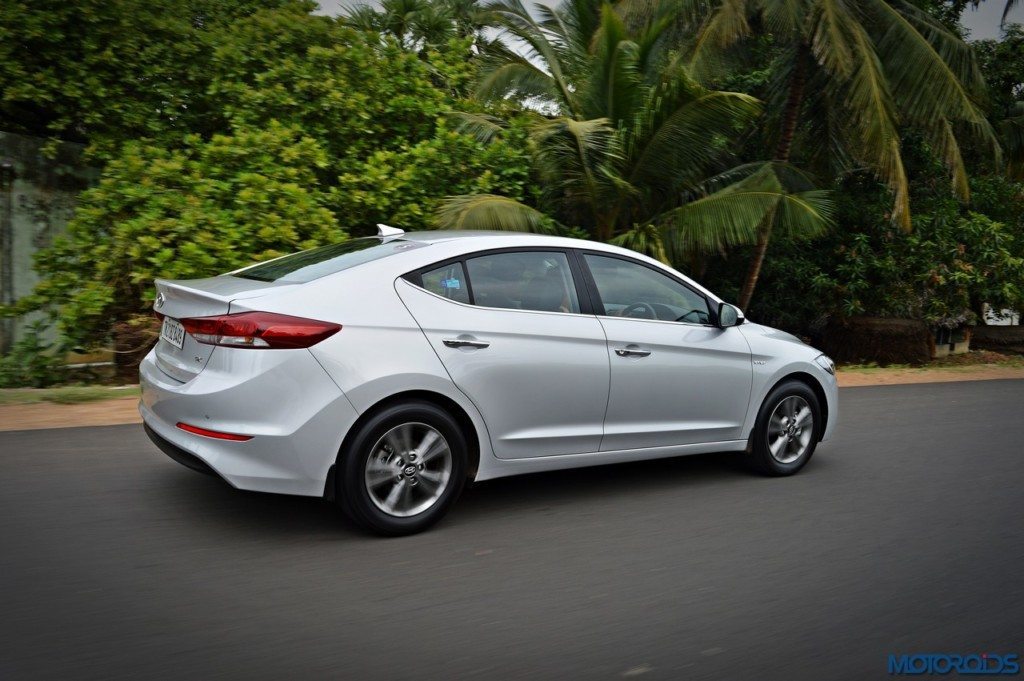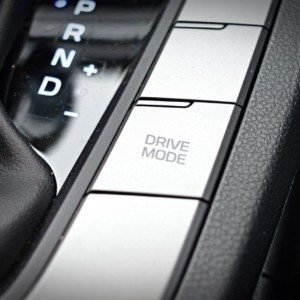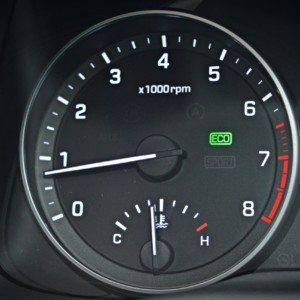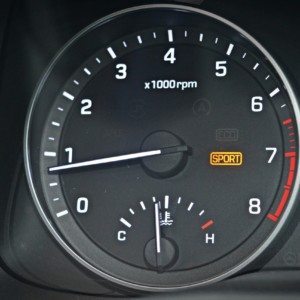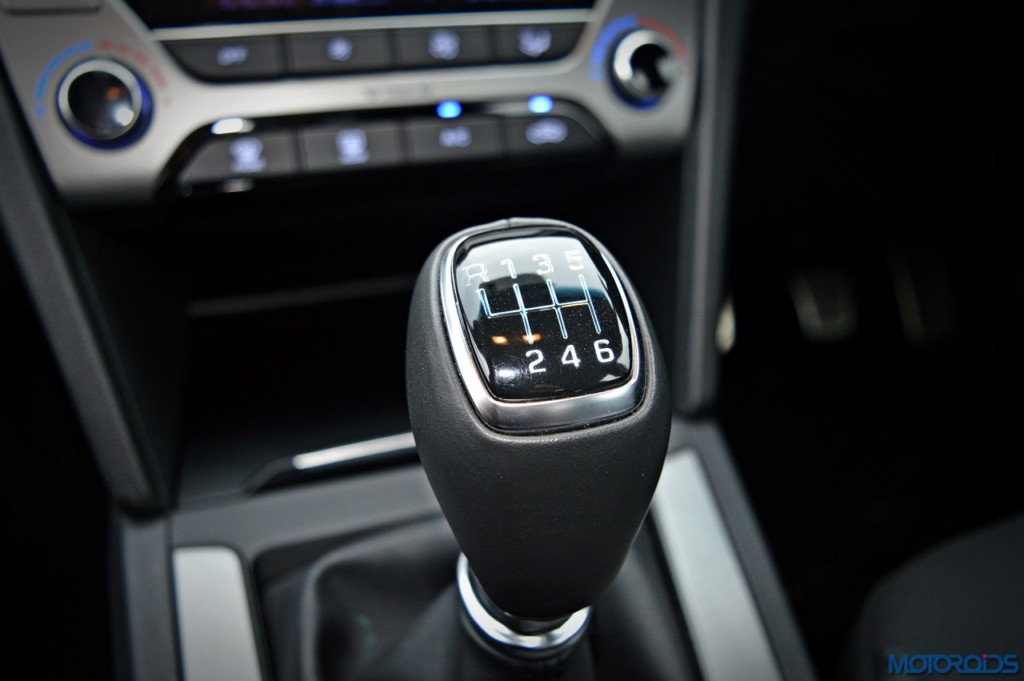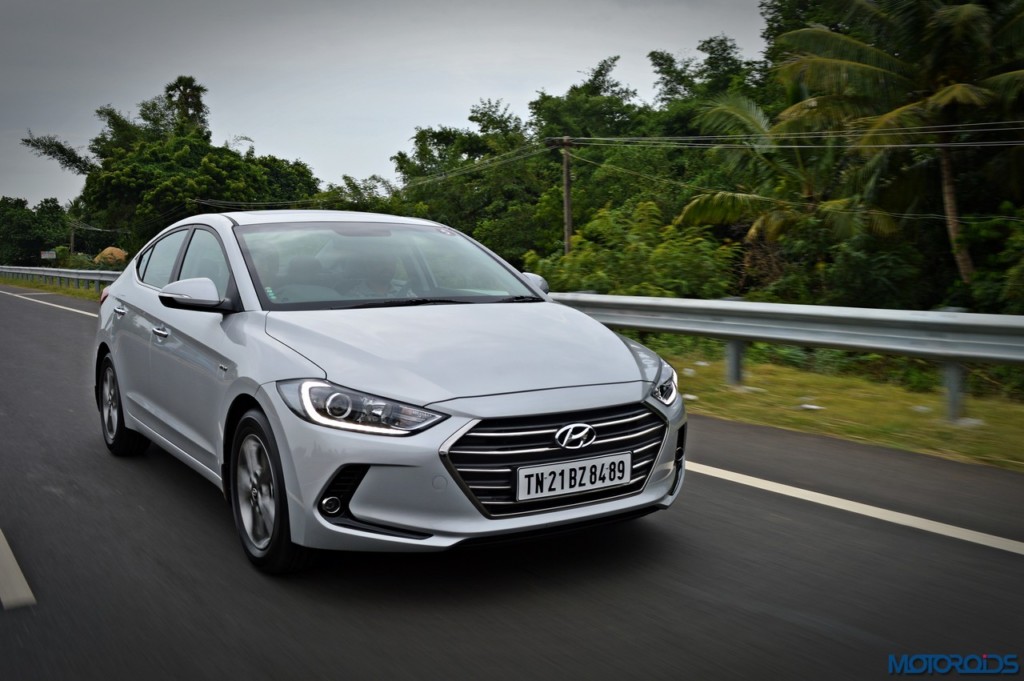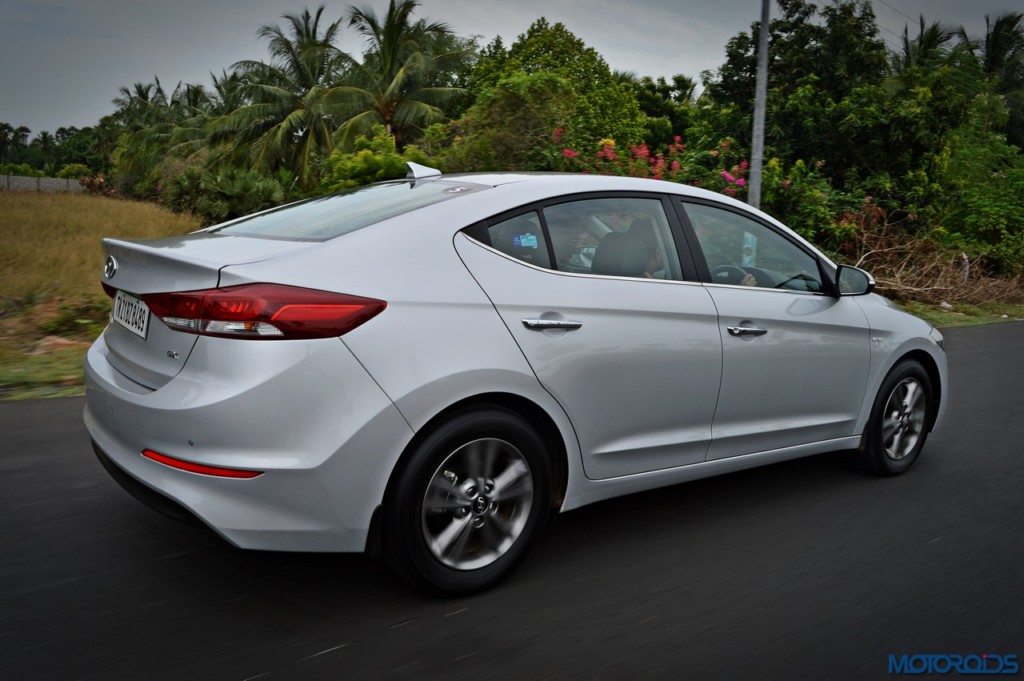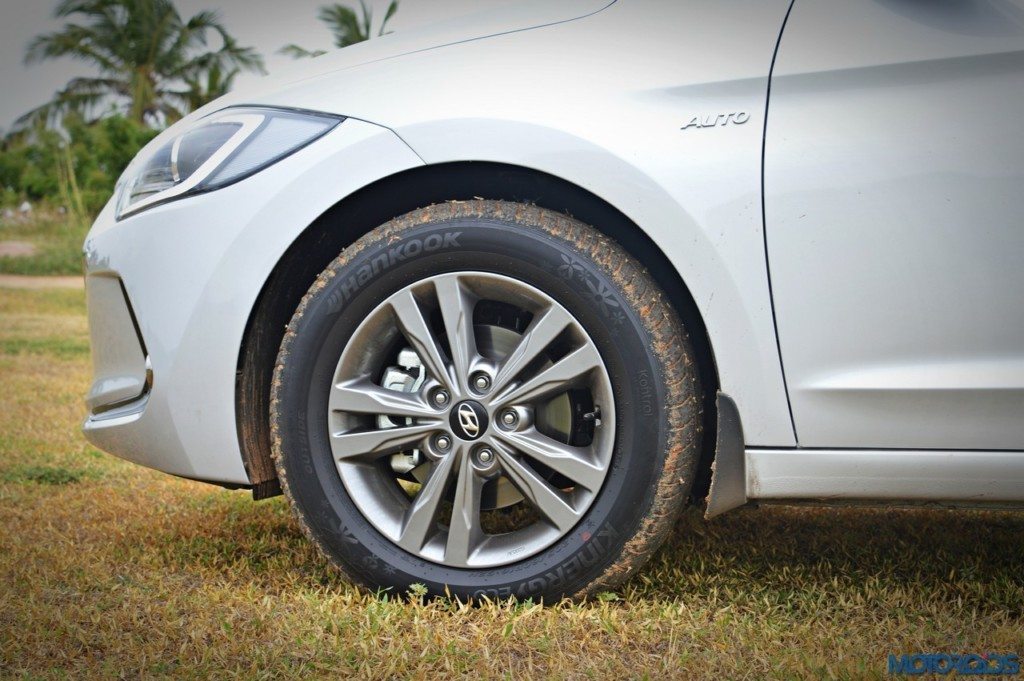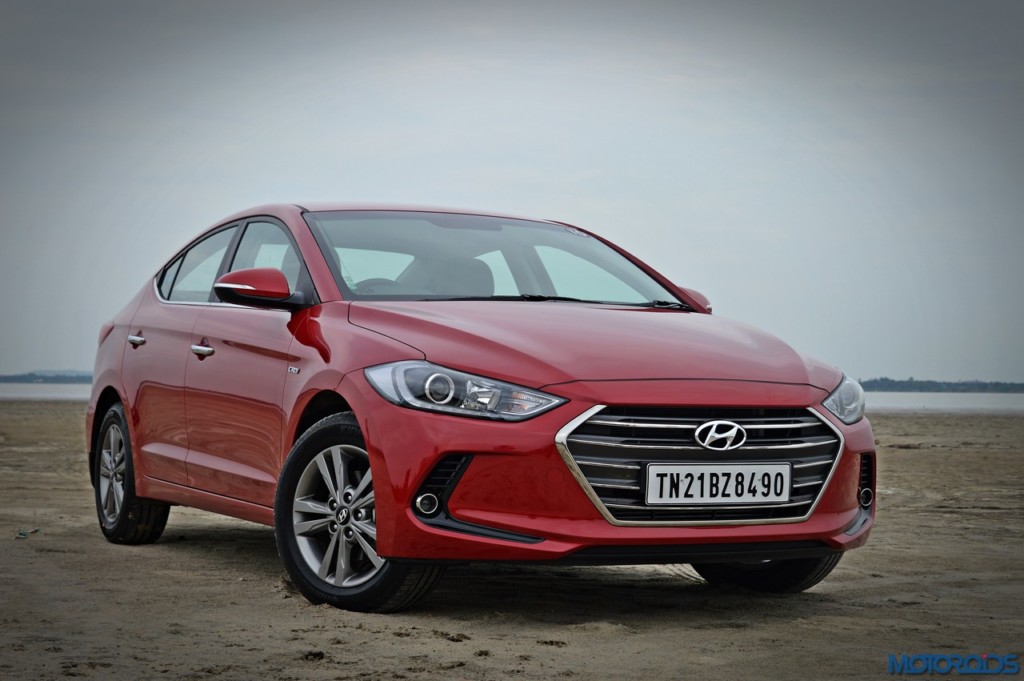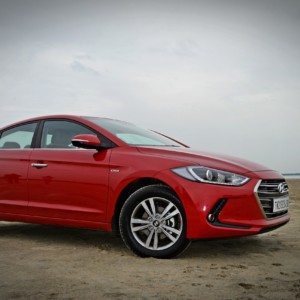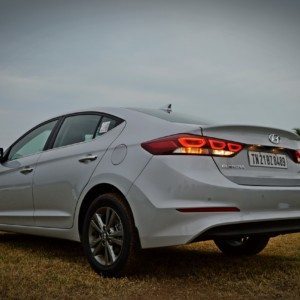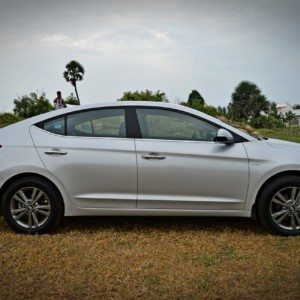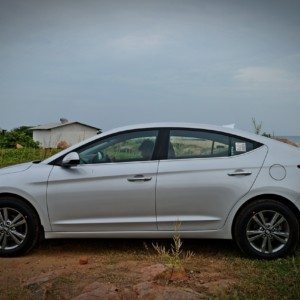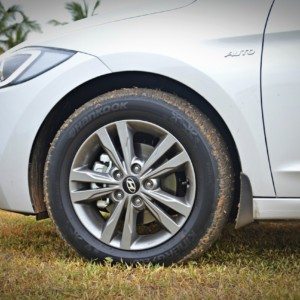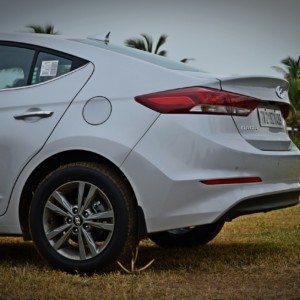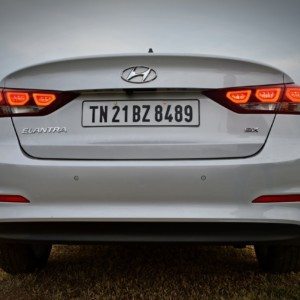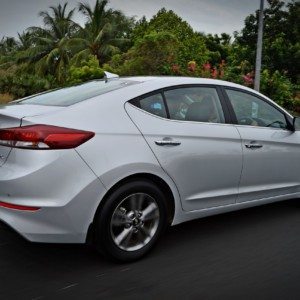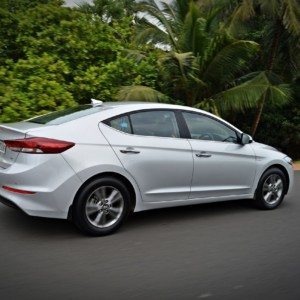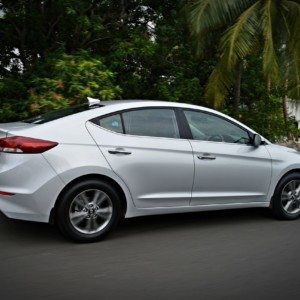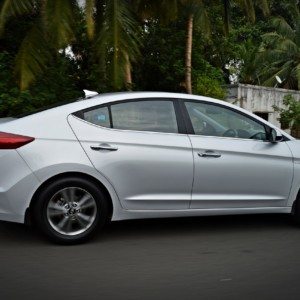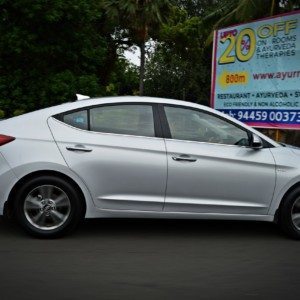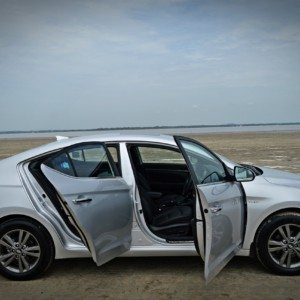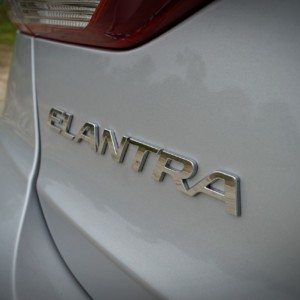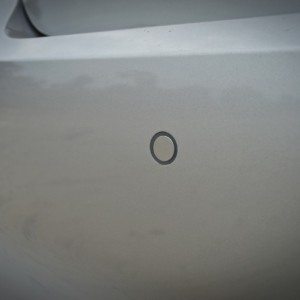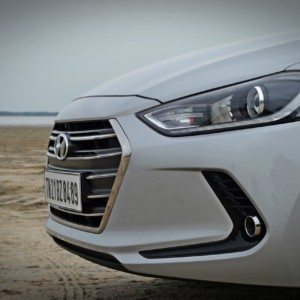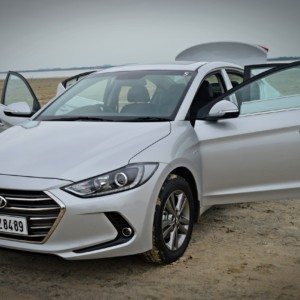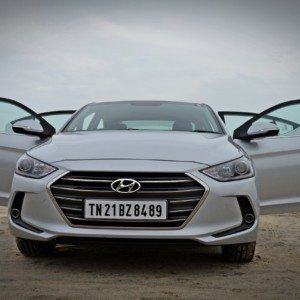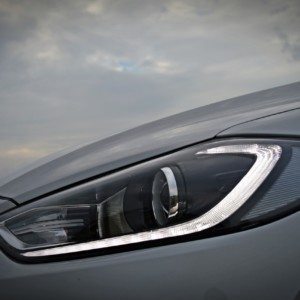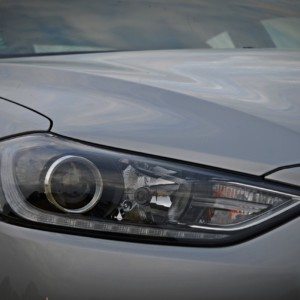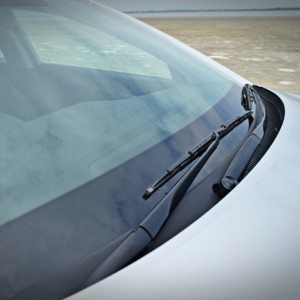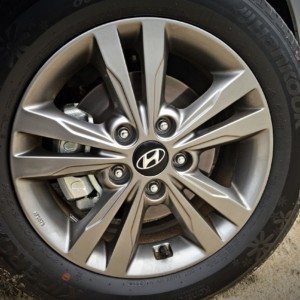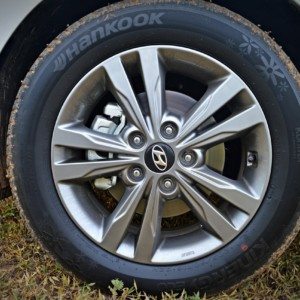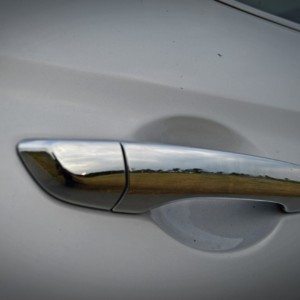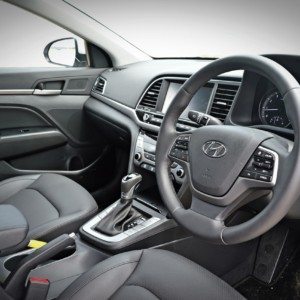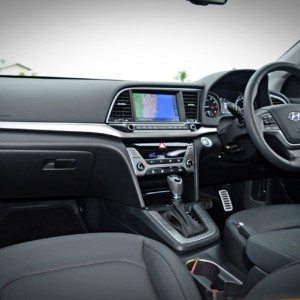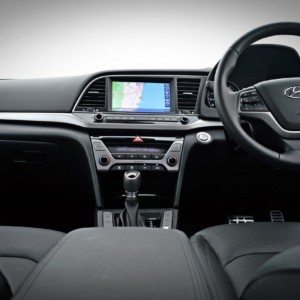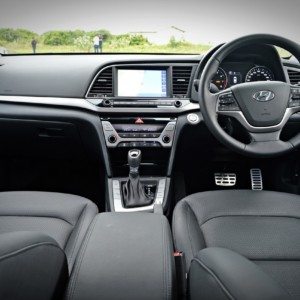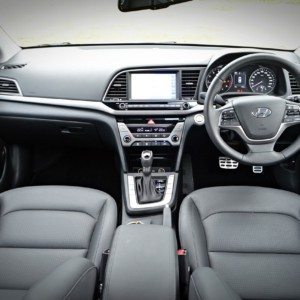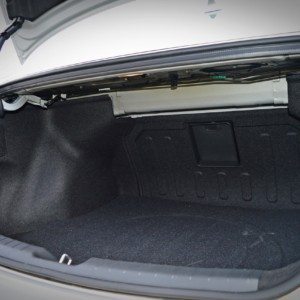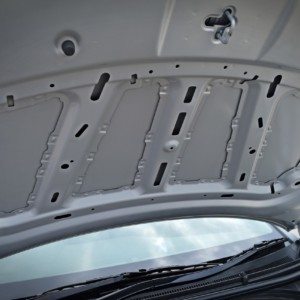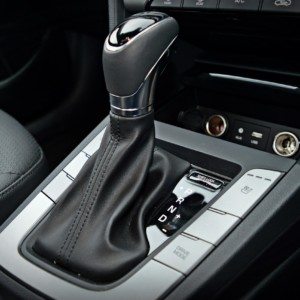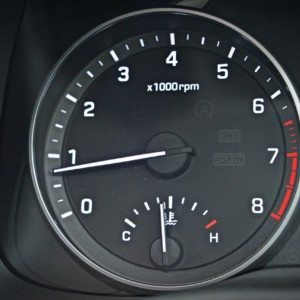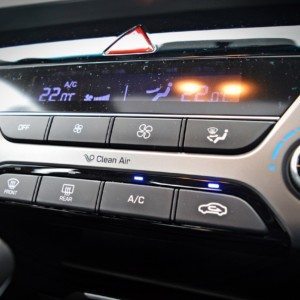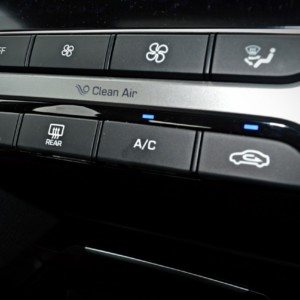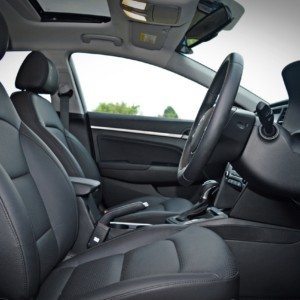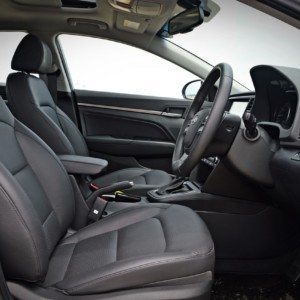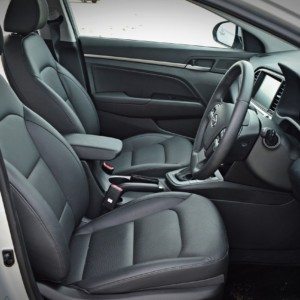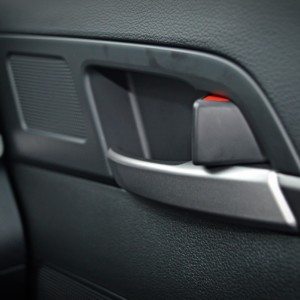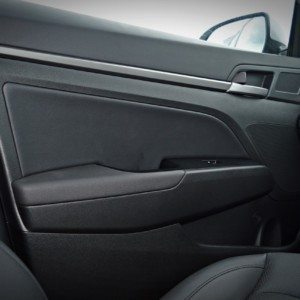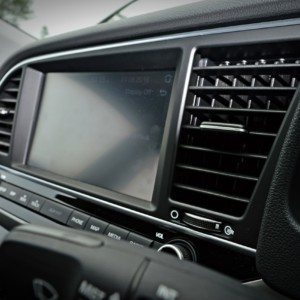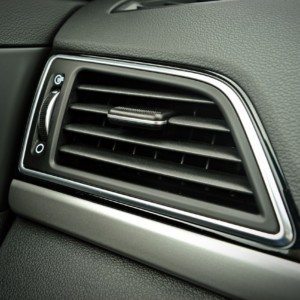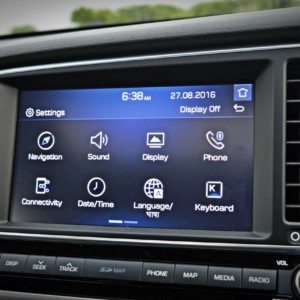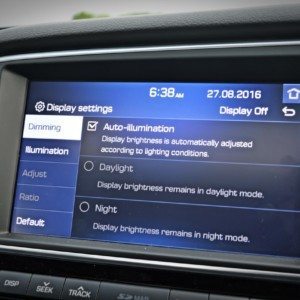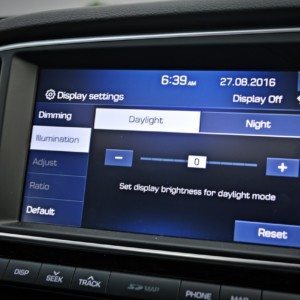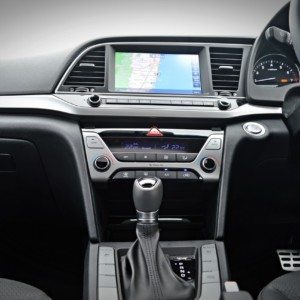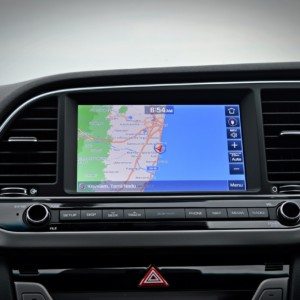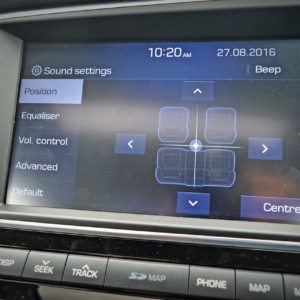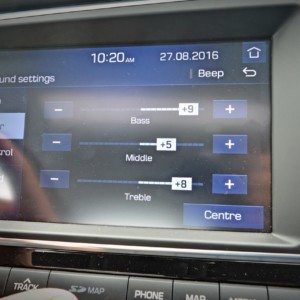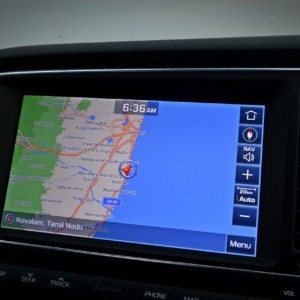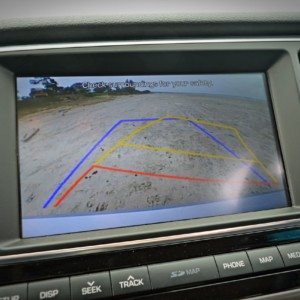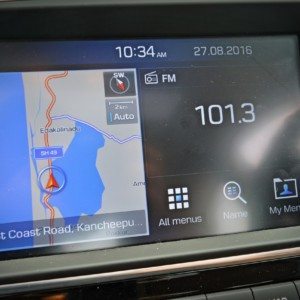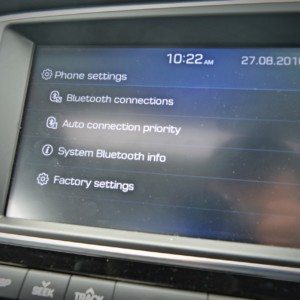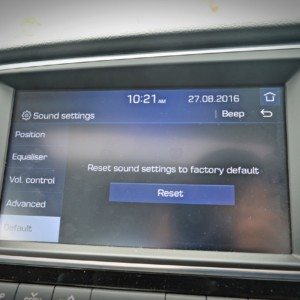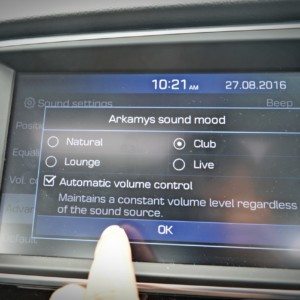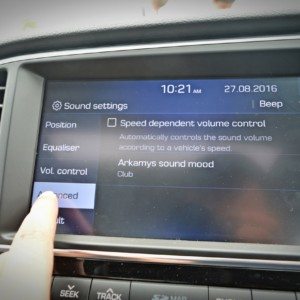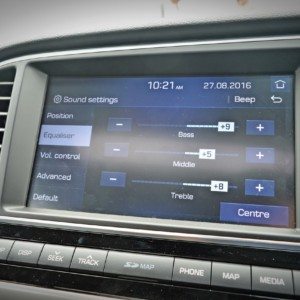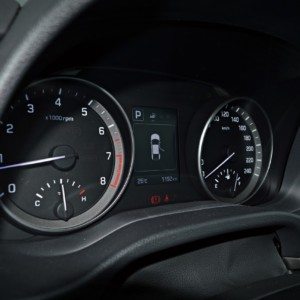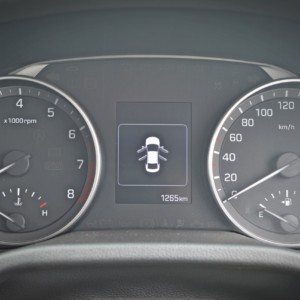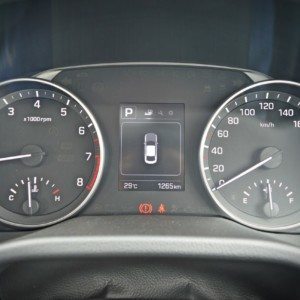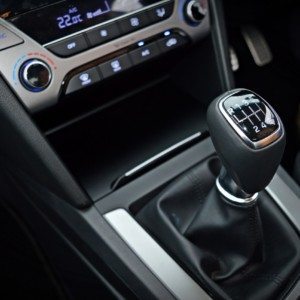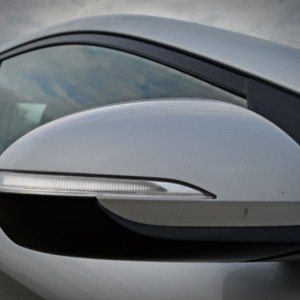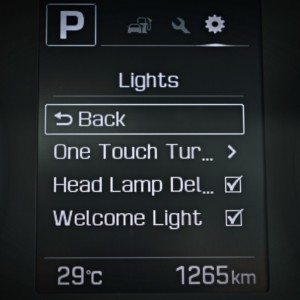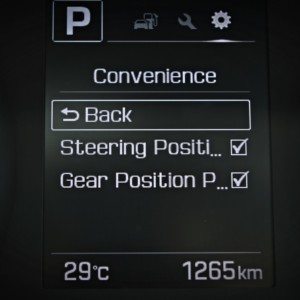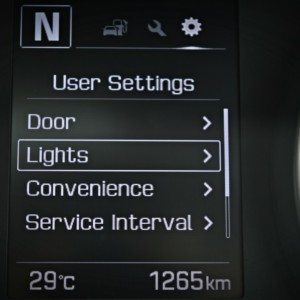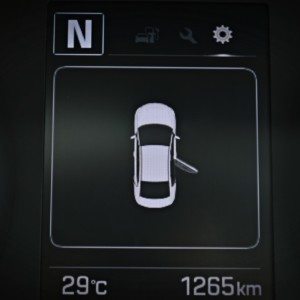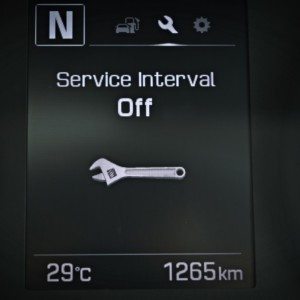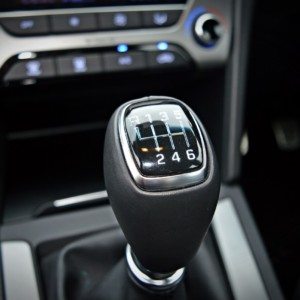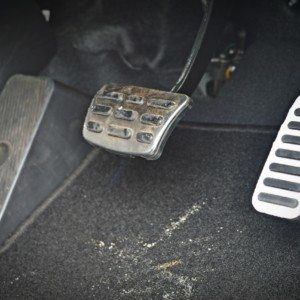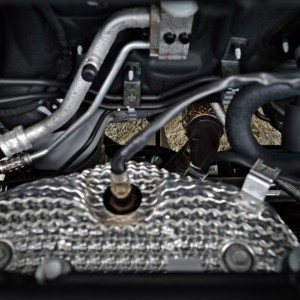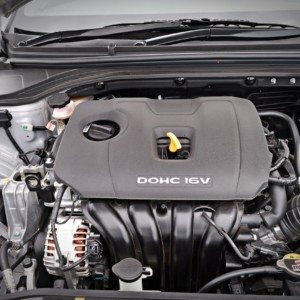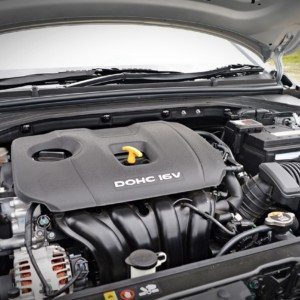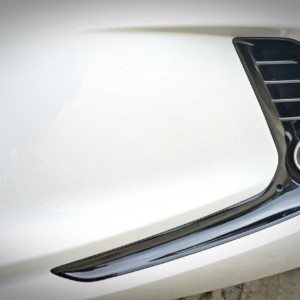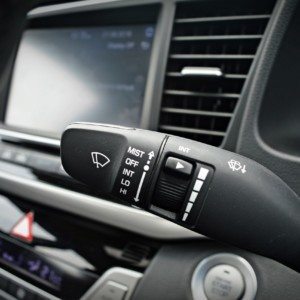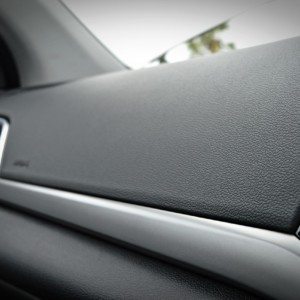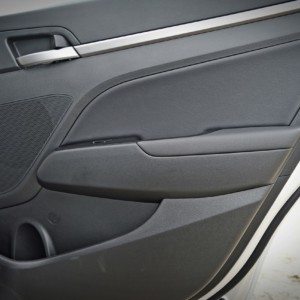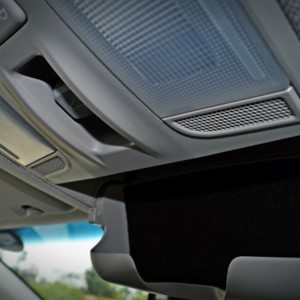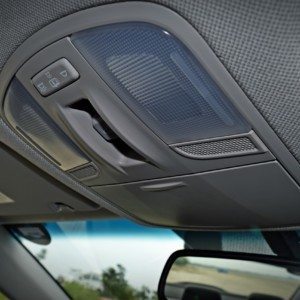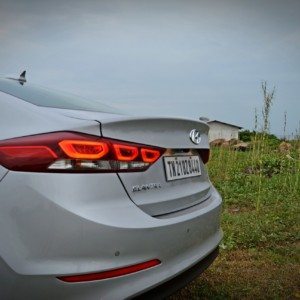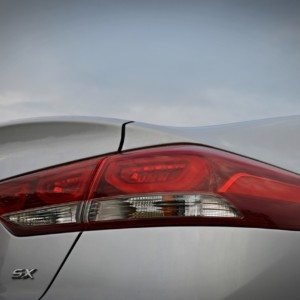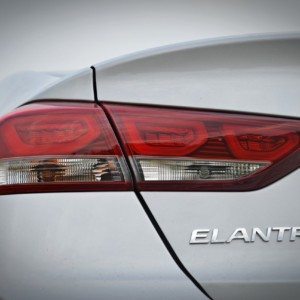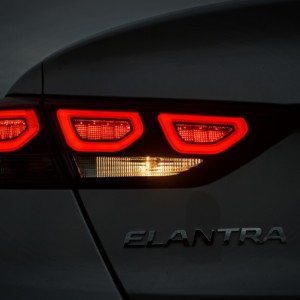Once in a while, a car comes along that’s so potent that it turns the segment on its head, or even better still, create its own niche. The eight generation Honda Civic, that we Indians still swear by, was one such car. It can largely be attributed for creating the sub-D, Super-C segment, and invited cars like the fifth-generation Hyundai Elantra to the field to play.
The Civic’s party was spoiled with the rise of the SUV brigade, which took down the formidable Honda, along with its rivals like the Elantra. The brigade, which is now led with Hyundai’s own Creta, took down a once healthy segment, currently contested only by the Toyota Corolla Altis, slow selling VW Jetta and Chevy Cruze models after the Elantra was axed last year.
The Elantra is back, and aims to re-introduce some much needed violence in the segment. Does it have what it takes? We find out. But first, here’s a background check on the car. The sixth generation Hyundai Elantra was unveiled on September 2015 at the company’s Global R&D Center in Namyang, South Korea where it has been engineered and designed. It made its global première at the Frankfurt Motor Show in the same month.
At 4,570 mm long and 1,800 mm wide, the new model is 20 mm longer and 25 mm wider than the previous-generation Elantra, resulting in increased interior space, which, Hyundai says is comparable with that of the segment above. The redesigned body structure incorporates 32% more advanced high-strength steel compared to the original Elantra.
The new Elantra doesn’t only look slippery, but with 0.29Cd of drag co-efficient, the highest in the segment, is slippery through the air too. This virtue can be attributed to a flatter underbody, a swooping profile and the front ‘Wheel Air Curtain’ – the boomerang like inserts on the front bumper that actually optimize the air-flow around the front wheel, apart from cooling the front brakes of course.
2016 Hyundai Elantra Design
When you have a design team led by Peter Schreyer, who has iconic designs like the Audi TT to his name, the least you can expect is a good looking car. And this is arguably the best looking Elantra yet, in all its 26-year old history. With a well-proportioned volume, and a low, wide stance, the new Elantra clearly stands out on Indian roads, especially in the more lustrous colors.
Imbibing Hyundai’s Fluidic Sculpture design philosophy, the new Elantra maintains its predecessor’s familiar silhouette, but this time around, the lines are defined better, while the surfaces get tauter.
The front is characterized by a new, low-set, trapezoidal grille, a feature that appeared on the stunning Vison G concept, as well as the ix35 compact SUV. Five slats highlighted with chrome fill the grill’s void, while the grille itself receives a thick chrome border.
The svelte headlamps bear an uncanny resemblance to the new Jaguar XE, and are jewelled up with L-shaped LED strips. The bumper gets the aforementioned ‘Air Curtains’, while within them nestle the diminutive, first-in-class, projector fog lamps.
In profile, the new Elantra continues to have a swooping roofline that culminates into a coupe-like rear section, while the well contoured wheel arch flares integrate seamlessly with the bodywork. For India, the new Elantra will ride on 16-inch, gunmetal finished alloy wheels wrapped with 205/60 Hankook Kinergy tires.
The rear end is particularly eye-catching, and features horizontal, LED tail lamps with graphics that look like an evolution of the Elite i20’s, along with a subtle, integrated boot lip spoiler.
Yep, chromed door handles for us Indians
A closer look at the 16-inch, gunmetal finished, five spoke (with a twin spoke design) alloy wheels.
The India-spec Elantra has 165 mm of ground clearance.
2016 Hyundai Elantra Interiors
The interiors are conventionally styled, with an all-black theme that gets sprinkled with dull silver inserts. The new dashboard can be defined by flowing lines that possesses an understated elegance.
While the dashboard is layered with soft-touch material, the rest of the trim inserts, sadly do not give off that much needed premium air. The door trims are a sea of hard touch plastics, and there’s no chrome for the inside door pulls. The knobs and buttons are a saving grace, and offer a tactile, up market feel. However, levels of fit and finish are commendable, with everything feeling really well put together.
The leatherette clad front seats are immensely comfortable though, with terrific lower back and under thigh support. You can also get your bottom and back cooled with the integrated, front seat air-conditioners, which is a stand-out feature in this segment.
The rear seat is fairly comfortable, but headroom for taller people at the back could be a bit cramped because of the swooping roofline. Legroom at the back is sprawling, and so is it at the front. The cabin’s very voluminous, and apart from the slightly constrained headroom at the back, the interiors offer generous amounts of room in all directions. Like the Creta though, the door sills are positioned slightly higher.
Ergonomically, the new Elantra pretty much ticks all the right boxes. I like the ‘driver focused’ layout of the cockpit, with a center console that’s angled at 6.9 degrees towards the driver. The steering is manually adjustable for rake and reach, while the driver’s seat is 10-way electronically adjustable. The aluminum pedals are well spaced out, but the dead pedal is a bit too upright for my liking.
The center console is dominated by the large, all-new, 8.0-inch touch screen equipped infotainment system that is equipped with both Apple Carplay and Android Auto for integration of app based navigation (MapMyIndia), streaming audio, voice controlled search capabilities and smart phone applications.
Touch sensitivity is fantastic, with almost instantaneous responses and well-layered, intuitive menus. The screen doubles up to display feed from the reverse camera, replete with adaptive guidelines, while the 6-speaker ‘Arkamys’ developed sound system sounds crisp and deep.
The 3-spoke, leather wrapped steering wheel, which comes with controls for the audio, Bluetooth, cruise control and the trip computer, feels great to hold. The clearly legible instrument cluster is a simple affair, with a decently sized MID between the dials that is pretty comprehensive.
As for interior storage, the new Elantra offers a decently sized compartment between the front seats, while the door pockets can be crammed with one-litre bottles.
There’s also a ‘Ski Through’ feature, which is basically a large port hole of sorts between the rear seat that opens out into the 458 liters of boot space.
Being a Hyundai, the Elantra is feature rich, and also offers equipment like an electric sunroof, dual-zone air-conditioning with a ‘Sync’ function that equalizes zones, rear AC vents, auto-opening ORVMs, door pocket lights, aluminum sill plates, USB charger, electro chromatic rear view mirror, cruise control and a smart key with button start.
2016 Hyundai Elantra Engines
The 2.0-litre, ‘Nu’ petrol engine is the biggest petrol engine in its class, and features a lightweight, all aluminum block & plastic intake manifold. The four-cylinder, 16 valve engine comes with dual variable valve timing and is good for 150 bhp; 3.4 more than its predecessor. The torque figure has gone up by 14.5 Nm and now stands at 192 Nm, which makes it more powerful than the erstwhile 1.8-litre engine. While the MT variant is rated at 14.59 Kmpl, the AT will do 14.62 Kmpl (both ARAI certified figures).
Alongside the petrol engine, Hyundai’s proven 1.6-litre Common Rail Technology diesel engine is available with the new Elantra, and offers a variable geometry turbocharger for low and high end torque. Both engines can be had with either an in-house developed 6-speed manual, or a 6-speed automatic transmission.
We just drove the Elantra petrol in both AT and MT guises.
2016 Hyundai Elantra NVH
Engage the brake, press the start button and the motor settles into a barely audible idle, just a shade below 1000 clicks. It’s particularly silent for its class when idling,the ‘Nu’ engine, and if the tachometer were shrouded, you’d have to be the canine kind to make out if the engine’s running or not.
Give it some gas and the engine doesn’t let you rev hard while the car stands still. Straightaway, the engine admits that it doesn’t like being revved too hard. Don’t get me wrong here. It doesn’t sound strained or coarse. Instead, there’s just an uninvolving, appliance like drone that rises or falls depending on the twitchiness of your right foot.
At idle, there are next to no vibrations creeping in through the steering wheel or the pedals. Only the gear selector lever, amongst all the controls, buzzes a bit to let you that the engine’s alive. Even with the tachometer sitting high at 5,000 clicks and the Elantra standing still, merely the floor responds inside with a minor tremble.
Do not let the lack of sound insulation beneath the bonnet fool you; the Elantra’s as quiet as a tomb inside.
Moving off and carrying sedate speeds, and the Elantra’s dual-zone air conditioned interior still stays remarkably quiet. When Hyundai says that it is the quietest cabin in its class, they aren’t kidding. For this generation, the Elantra stays the quietest because of reduced panel gaps, thicker glass, revised engine mountings, new sub-frame bushes, and finally, the more rigid body shell.
In case you’re wondering, all of those NVH-reducing techniques have paid off. There’s barely any wind or road noise at cruising speeds, and an eerie, funeral-like silence engulfs the Elantra’s cabin. The spirits can be lifted in an instant with the punchy ‘Arkamys’ sound system though. Only when you mash the throttle, does the drone of the engine reappear inside.
2016 Hyundai Elantra Performance
Even though it has 150, naturally aspirated horses, the Elantra’s not particularly involving to drive enthusiastically. Power is delivered linearly, but the engine isn’t quite rewarding when going flat out. Even though it redlines at over 6,000 rpm, there’s no real urgency to the acceleration, and the drone-like noise doesn’t really get your aural senses tingling either. This engine is best enjoyed during moderately paced driving, like it was meant to be. This one isn’t a petrol head’s wet dream for sure.
Drive with a light foot however, and the Elantra impresses. The engine pulls happily in its sweet spot, which lies between 2,500-4,000 rpm, post which power tapers off. I believe a few words of appreciation for the new 6-speed automatic transmission are in order now, so here goes. The box is commendably smooth and the gears slot into place without any perceptible jerks. In fact, in Normal mode, you’d be hard-pressed to identify the shifts unless the bouncy tachometer needle told you so. However, it isn’t laid-back at all. Kick-downs are urgent and just need a little digging of the throttle (even in Eco mode), and the transmission never gets confused (apart from a couple of time when it refused to slot into first even as the car braked to a complete halt). That said, it takes off in second gear with utmost ease.
Downshifts are smooth and crisp as well, which encourages you to use the manual mode (via the gear selector lever; no paddle shifters here) to wring out the smallest tendrils of fun the somber power-train has to offer. The Elantra petrol automatic also comes with three driving modes – Normal, Eco and Sport. While the first two modes are tuned towards economical driving, Sport firms things up a bit. The steering becomes noticeably heavier in your hands, the motor becomes a tad punchier, and provided you’re not standing on the right-most pedal, gear shifts happen a bit late. The driving modes are best enjoyed in day-to-day driving as you milk the engine, as their nuances are not that pronounced with the pedal to the metal.
Manual
The 2.0-litre engine also comes with a 6-speed manual transmission, which, as you might have guessed, is a bit more involving to drive. The shifter is alright, but the gates aren’t well defined, so it feels a bit rubbery. As for the clutch, it’s nice and light, but there’s a bit of extra play before the biting point comes along. From a standstill, the car crawls forward by just modulating the clutch, and without any throttle inputs.
The gear ratios are well-spaced out, and are neither too long, nor too short. First gear is good for 65-70 kph, while you can reach a shade over 105 kph in second. Third gear is a bit long, and the most enjoyable out on the open road, as it’s the only cog that calls for some pleasurable shove even while doing triple digit speeds. Stretch it in third, and 140 kph is doable. In sixth gear, the new Elantra efficiently cruises at 100 kph, with the engine speed sitting at 2,500 clicks (both MT and AT).
Drivability is not an issue with the new Elantra (both MT and AT), as the drive-train is tuned well for low speed puttering. Putting two and two together, it’d be safe to say that the new Elantra is not the rebellious child. It’s smooth transmission and laid-back engine, along with the super quiet cabin, calls for a relaxed driving style.
2016 Hyundai Elantra Ride and Handling
The Motor Driven Power Steering (MDPS) is unexpectedly light at low speeds for easy manoeuvrability, and weighs up nicely as speeds rise. However, feedback is nothing to write home about and the whole setup feels a bit disconnected if you’re up for some spirited cornering. You needn’t worry, as for day-to-day driving, the steering works just fine.
The new Hyundai Elantra rides MacPherson strut front suspension, along with a coupled torsion beam axle set-up (CTBA) at the back. According to Hyundai, the suspension geometry has been redesigned to provide greater control and improve ride quality, compared to the previous model. Changes to the layout of the suspension components, including the rear shock absorber and spring positioning, are complemented by structural enhancements to strengthen the chassis.
The ride quality is supreme, and apart from the mildest of thuds filtering in through your spine at low speeds, the ride is virtually spotless. It’s very comfortable, the way the Elantra rides, and there’s none of that wallowing and yacht like pitching, thanks to the new Hydraulic Rebound Stoppers on each shocks. Even while going over expansion joints at speed, the mid-sized sedan stayed composed, with the suspension stabilising itself quickly. It could very well be the best riding Hyundai on sale in India right now.
It is still softly sprung though, which means that there’s quite a bit of body roll that can be even felt at crawling speeds while making quick changes in direction. Out test run was limited to long, sweeping, high-speed corners, and the Elantra proved to be a bit handful while taking those at full tilt. The aforementioned body roll came back with added vehemence. Body control at high speed, in spite of Electronic Stability Control, is certainly not the best out there, and is only chinned up by the sticky Hankook rubber.
We suspect that it’s the suspension setup that’s the killjoy here, because the new, rigid chassis certainly feels that it should up for some hard driving. The high-speed dynamics are a bit disappointing, because this car actually represents Hyundai’s coming of age in terms of design and engineering. Then you hear that the new Elantra’s handling has been apparently honed at the Korea International Circuit in Yeongam.
Braking performance is satisfactory, while pedal feel and bite are very progressive. You’re right at home with the Elantra’s anchors, which inspire confidence and do not take time getting used to. The Elantra gets disc brakes at all four corners, along with ABS, EBD and Vehicle Stability Management, which ensures that the car stays rock stable under hard braking in a straight line. High speed stability is not a concern either, as the Elantra stays completely planted at triple digit speeds that near the double ton.
2016 Hyundai Elantra Safety
The new Hyundai Elantra is a safe car, with six air bags (front, side and curtain), Hill Assist Control and better structural adhesives all around. Don’t take our word for it, but the new Elantra has scored a Maximum Safety Rating from IIHS (Insurance Institute for Highway Safety), one of America’s leading vehicle safety regulatory bodies. What’s more, for low speed collisions, the new Elantra’s front and rear ends pack something called a ‘Crush Box’, which accounts for minimum bodywork damage, thus reducing damage costs significantly.
2016 Hyundai Elantra Verdict
If you’re a 30-something, image conscious, corporate guy with a pretty wife who couldn’t care less about driving pleasure, the new Elantra’s the perfect fit for you. It’s got the looks, it’s got the comfort, it’s got the space, it’s methodical yet desirable and it’s definitely got the toys. It’s quite efficient too, and drives well, provided you aren’t an adrenaline junkie. Then there’s the price. With introductory prices starting at INR 12.99 lakh (petrol) and INR 14.79 lakh (diesel), the new Elantra offers a lot of quality car for the money, and if you fit the intended clientele’s profile and are not a Toyota fan boy, it is totally worth it.
The icing on the cake is the Hyundai Premium Assurance Program (HPAP) which offers a 3-year, unlimited mileage warranty, along with free maintenance for 3 years/30,000 km, 3 years of roadside assistance, 3 updates on ‘Map Care’ and 3 ‘Home Visits’.
2016 Hyundai Elantra Specifications
| Length x Width x Height | 4,570 x 1,800 x 1,465 mm |
| Wheelbase | 2,700 mm |
| Max Tyre | 205/ 60 R16 Alloy Wheels |
| Ground clearance | 165 mm |
| Engine | Capacity (cc) | Maximum Power (ps/rpm) | Maximum Torque (kgm/rpm) |
| Petrol Nu 2.0 MPi |
1,999 | 152ps@6200 | 19.6@4,000 |
| Diesel 1.6 VGT CRDi |
1,582 | 128ps@4,000 | 26.5@1,900~2,750 |
| Engine | ARAI (Certified figures) (6 Speed MT) |
ARAI (Certified figures) (6 Speed AT) |
| Petrol Nu 2.0 MPi |
14.59 Kmpl | 14.62 Kmpl |
| Diesel 1.6 VGT CRDi |
22.54 Kmpl (Best -in-Segment) |
18.23 Kmpl |
2016 Hyundai Elantra Mega Image Gallery

